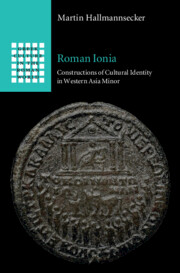Book contents
- Roman Ionia
- Greek Culture in the Roman World
- Roman Ionia
- Copyright page
- Dedication
- Contents
- List of Figures
- List of Maps
- List of Tables
- Acknowledgements
- List of Abbreviations
- Introduction
- Chapter 1 Mental Geographies
- Chapter 2 The Ionian Koinon
- Chapter 3 Cults and Myths
- Chapter 4 Times and Names
- Chapter 5 The Ionic Dialect
- Chapter 6 Ionianness outside Ionia
- Concluding Remarks
- Appendix: Evidence for Officials of the Ionian Koinon in the Roman Period
- Maps
- Bibliography
- Index of Ancient Sources
- General Index
- References
Bibliography
Published online by Cambridge University Press: 05 May 2022
- Roman Ionia
- Greek Culture in the Roman World
- Roman Ionia
- Copyright page
- Dedication
- Contents
- List of Figures
- List of Maps
- List of Tables
- Acknowledgements
- List of Abbreviations
- Introduction
- Chapter 1 Mental Geographies
- Chapter 2 The Ionian Koinon
- Chapter 3 Cults and Myths
- Chapter 4 Times and Names
- Chapter 5 The Ionic Dialect
- Chapter 6 Ionianness outside Ionia
- Concluding Remarks
- Appendix: Evidence for Officials of the Ionian Koinon in the Roman Period
- Maps
- Bibliography
- Index of Ancient Sources
- General Index
- References
Summary

- Type
- Chapter
- Information
- Roman IoniaConstructions of Cultural Identity in Western Asia Minor, pp. 252 - 298Publisher: Cambridge University PressPrint publication year: 2022



